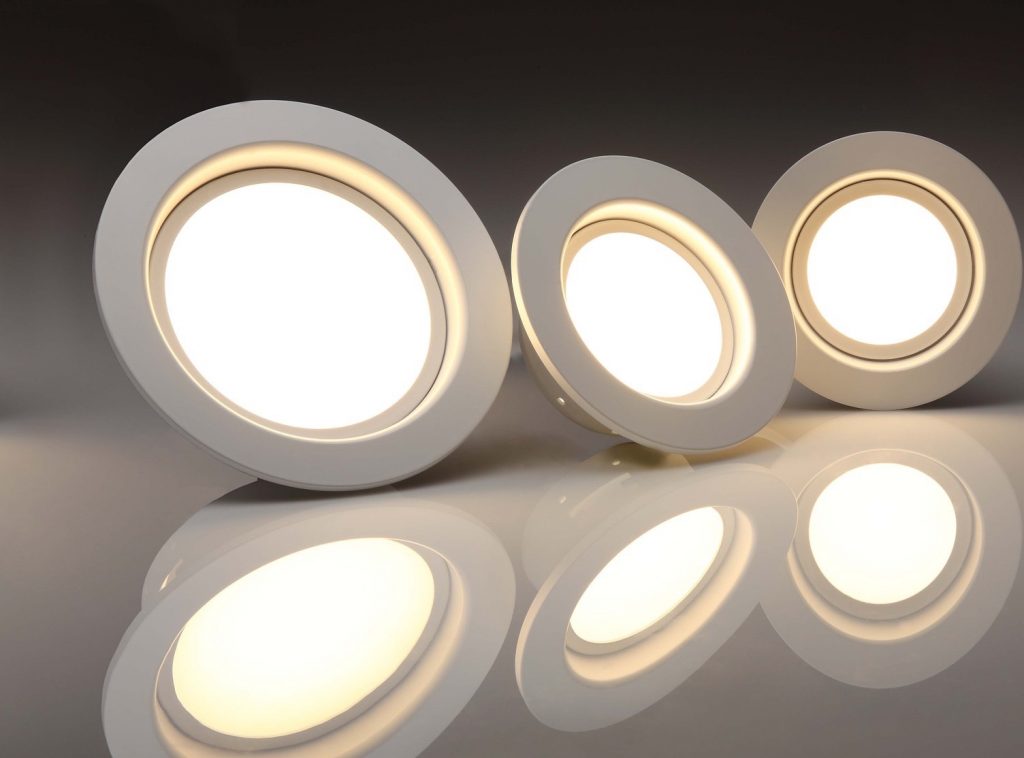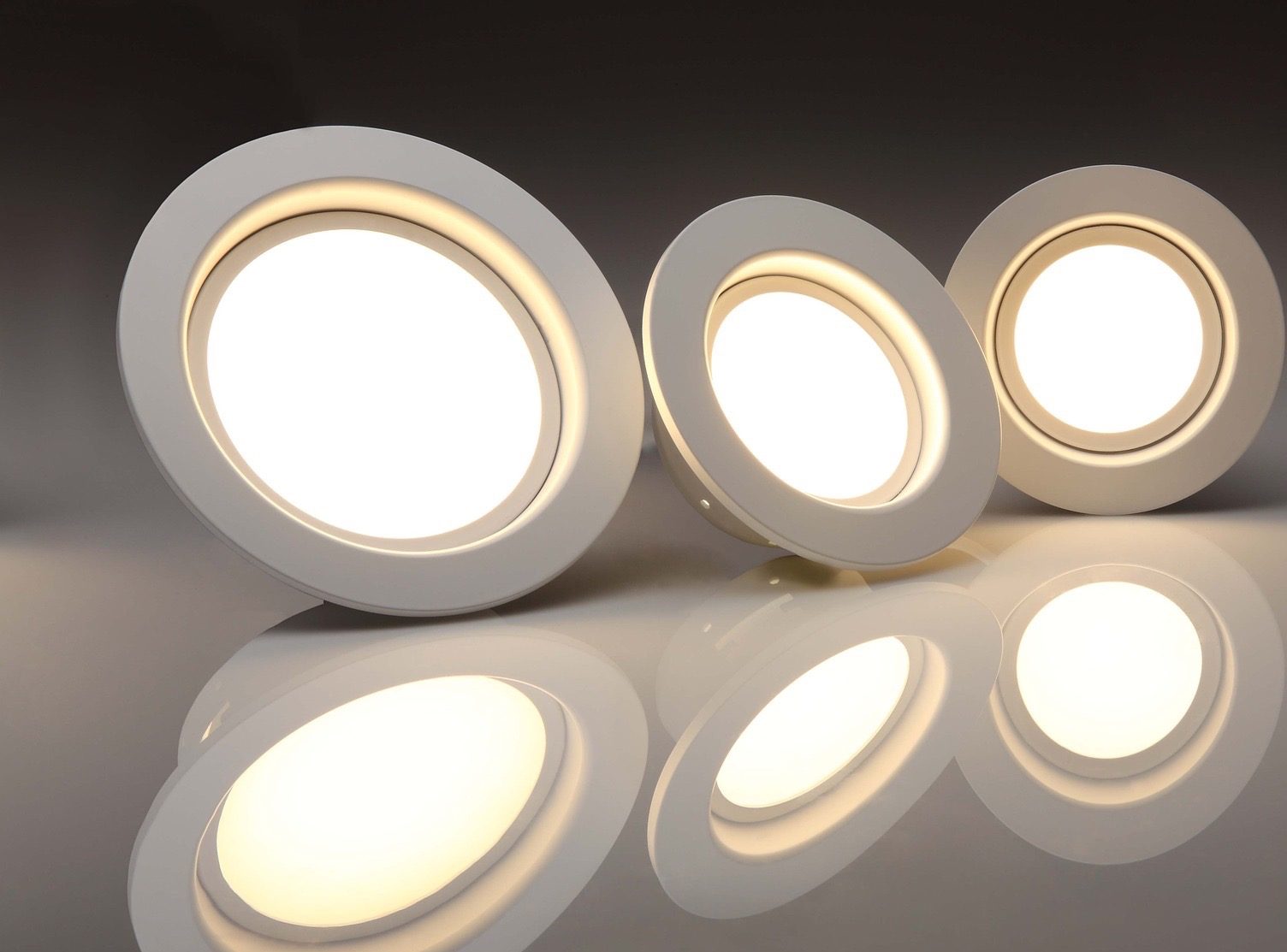Making the switch: The benefits of LED lighting
As the cost of LED lights continues to decrease and their versatility continues to increase, it’s hard to argue with the case for converting to LED. As well as being a smarter choice, LED lights are, without question, a better choice for the environment. There has never been a better time to make the switch to LEDs.

Why are LEDs better?
There are plenty of reasons why LEDs are a better light, and we’ll cover them in this article. But for us, the biggest reason to choose LEDs is sustainability.
An LED bulb can last as long as 25 incandescent light bulbs, which adds up to a lot less waste going to landfill. And because LEDs last so long (10 plus years in most standard situations), we simply don’t have to make as many, so there is less drain on natural resources.
LEDs produce more light with less energy, making them a smart way to help reduce greenhouse gas emissions through less energy use. If you’re replacing a 100W incandescent bulb, you’ll only need a 15W – 18W LED bulb.
New Zealand is making the switch
A recent report from EECA states that sales of incandescent light bulbs in New Zealand are plummeting. In 2015/16, 4.6 million incandescent light bulbs were sold compared to just 2.8 million in 2019/20. For every 100,000 New Zealanders who switch to LEDs, there is a saving of 1,669 tonnes of CO2 being produced. This has a real impact.
Why LED lights are the smart choice
Energy-efficient LED lights use up to 80% less energy than standard (incandescent) lamps. As soon as you make the switch, you’ll start making savings.
- Longer-lasting. LED lights can last for up to 25,000 hours, some even lasting as long as 50,000 hours (that’s over five and a half years of continuous light or about 13 years based on 10 hours of use per day). Standard incandescent bulbs last around 1,000 hours.
- No toxic materials. LED bulbs do not contain mercury, a toxin found in fluorescent lamps and commonly ends up in landfill. LED lights don’t contain filaments found in incandescent and halogen bulbs.
- Same results. LED lights come in a wide range of colours, from warm white to cool white. You don’t have to give up that warm candlelight look that we know from halogen or incandescent lights when you make the switch to LEDs. You can get this same glow from LEDs as well as cool whites.
- Affordable. As the use of LED lights increases, the cost and range of options is improving. The cost of LED lights has dropped significantly over the last few years, with single LED lamps (light bulbs) costing as little as $12.
- Everything a standard light can do, plus more. LED lights are dimmable, making it possible to achieve the same lighting ambience you’re used to with incandescent lamps. Because LEDs are extremely robust and versatile, they open up a wide range of options for your lighting plan. LED strip lighting adds a great look under kitchen cabinets or in wardrobes and is easy to install in small spaces.
The difference between incandescent lights and LED lights
Incandescent lamps generate light by heating the filament to a very high temperature. The warm yellow “glow” creates the light. Incandescent light is highly inefficient, with 95% of the energy input emitted as heat. It is this high amount of heat generated in the process which causes the filament to burn out and “pop”.
LED (light-emitting diode) light bulbs are semiconductors and do not get hot. As electrons pass through the semiconductor, they are turned to light. LED lights are more efficient at turning energy into light, therefore, less energy radiates from the bulb as heat. Because there is such little heat created, the diodes can operate for a long time.
The hottest outside surface of an LED light can be half the temperature of an equivalent incandescent or halogen bulb and around 20% cooler than fluorescent bulbs.
How to convert your house to LED
In many cases, changing to LEDs is just a matter of changing the bulb from a traditional incandescent lamp (or bulb) to an LED light. But there will be some instances where you will need to replace the light fitting before you can start using LED lightbulbs, and in this case, you’ll need an electrician to do the job.
These include:
– Lights
– Ceiling lights
– Dimmable LEDs
While this will incur an up-front cost, it is well worth it in the long-run.
LED lights are great for living in Central Otago
One of the big reasons we encourage our customers to change to LED lights is the way it can help improve the insulation of a house. When incandescent lights are installed in ceilings, they generate too much heat to safely run pink batts over them. Placing insulation directly over ceiling lights or their transformers is a fire risk. You must leave a gap in the insulation to meet the building code.
This is not the case for LEDs. Because LEDs do not reach anywhere near the heat of incandescent lights, you can cover them with insulation without the need to leave gaps. And we all know in the cool Central Otago winters, every bit of insulation counts. Using LED lights means you don’t have to let any hot air escape into ceiling cavities.
Where to use LED lights
Today’s LED lights are exceptionally robust and are different from traditional fluorescent and incandescent lights, which are prone to easy breakage.
Because of this, we love to see the many applications for using LED lights in houses, office or shops. Many new-style LED lights are directional, giving you the ability to focus light on a specific area.
Comparing the cost of LED vs. standard bulbs
| 12w LED bulb running for 3 hours a day for 1 year will cost | $3.55 |
| 100w incandescent bulb running for 3 hours a day for 1 year will cost | $29.57 |
Each LED bulb could save you $290.
Based on the lifespan of one LED lamp used to replace one standard 100W lamp using a variable electricity price .24c/KWh.
*From www.energywise.co.nz
Try for yourself. Here’s a great calculator from Phillips
https://www.lighting.philips.co.nz/consumer/led-lights/led-savings-calculator
Ready to start saving today with LED lights? Talk to us about converting to LED energy-efficient lighting.

